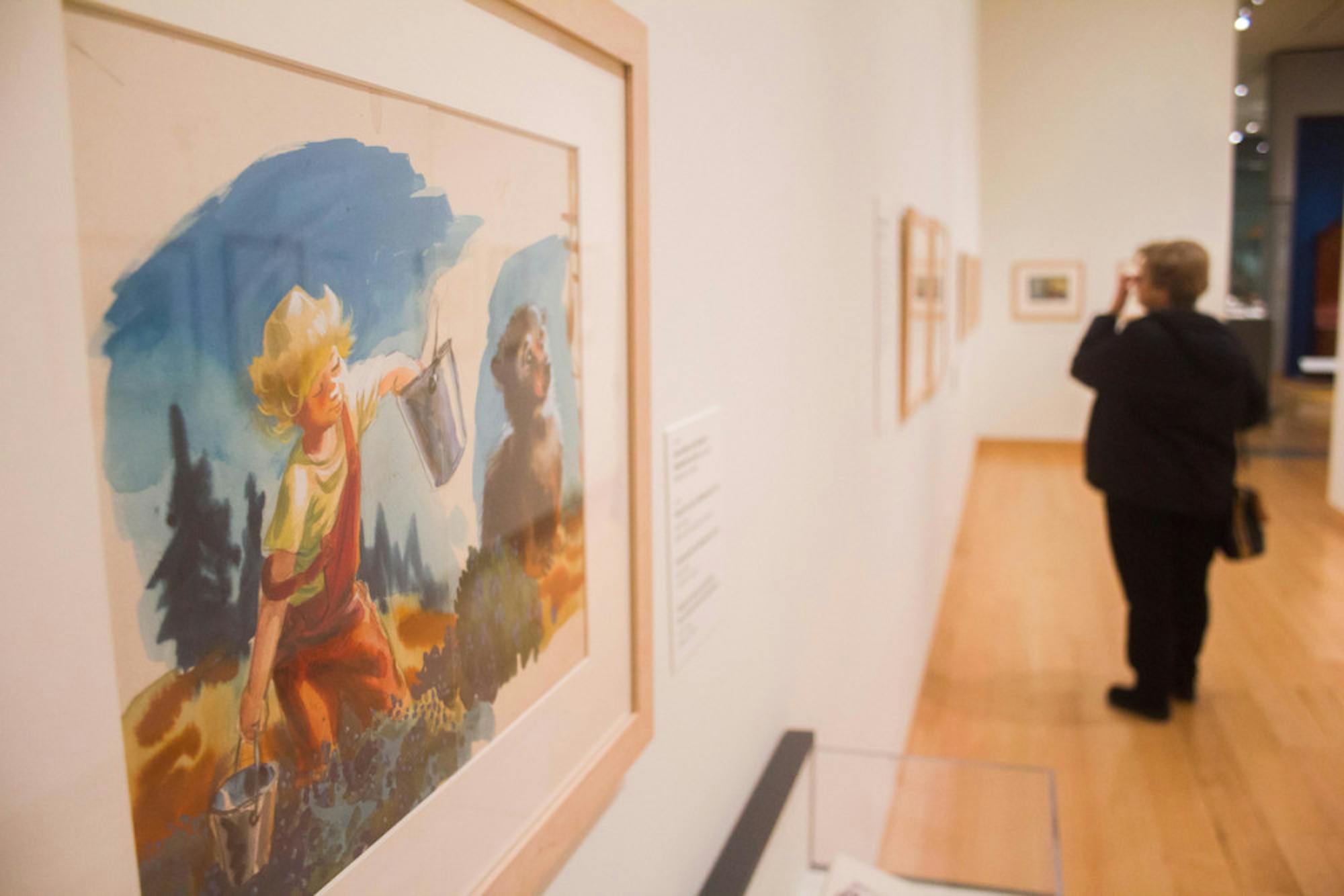The Museum of Fine Arts in Boston opened an exhibit titled "Make Way for Ducklings: The Art of Robert McCloskey" On Nov. 25. Any child of Massachusetts will recognize the story as well as its iconic and precise illustrations, so it is appropriate to visit the museum on the Green Line, to walk through the frigid wind in true Bostonian fashion. The exhibit itself, however, gives off timeless warmth.
The gallery is intimate but not cramped and sits off to the side of another, larger gallery in the American Wing. Being almost hidden like this makes the exhibit feel like another world. According to the labels at the front, McCloskey’s world that the viewer sees in his art consisted of a childhood in Ohio, a college education in Massachusetts and a family vacation house in Maine. The perimeter of the gallery showcases his best-known works (almost entirely from children’s books), and within an interior structure is the showcase: McCloskey’s work on "Make Way for Ducklings" (1941), recipient of the 1942 Caldecott Medal. Parents, children, teenagers and elders alike were strollinmg through, all looking touched.
The personal touch to McCloskey’s work is what makes him iconic. He was born in 1914 in Hamilton, Ohio, and at 26, he published the book that launched him to fame, "Lentil" (1940), about a boy in a fictional Midwestern town that resembled his own. He studied in Boston, Mass. and returned to write "Make Way for Ducklings", a story of a family of mallards making their way through Boston’s public gardens. As a husband and father, he bought a summer home on Deer Isle, Maine, and wrote "Blueberries for Sal" (1948), featuring his daughter and local scenery. "Burt Dow, Deep-Water Man" (1963) is based off a “local character” in the neighborhood.
In McCloskey's work, the passion is real and the love is real. No matter where the child reading his books is from, the sense of home and comfort is unmistakable. Almost all of McCloskey's art exists within children’s books, and the gallery circumvents that obstacle by showing sketches, drafts and final pages of the books with excerpts at the bottom. McCloskey’s passion is revealed in these sketches; for "Make Way for Ducklings," he consulted an ornithologist and spent two years studying mallards in the American Museum of Natural History after his original duck illustrations weren’t meeting his or his editor’s standards. No child reading his books (or at the exhibit making “quacking” noises) would necessarily notice such detail, but putting this sort of care into all his books gives them a familiarity, tenderness and coziness that puts McCloskey on a plane above other children’s book writers. Everywhere he sets his books feels like home.
Another thing children walking through the exhibit will not recognize is the context in which these books were written. All of his books featured here were written shortly before or during World War II or in the midst of the Red Scare. It was a time of fear and insecurity children from that time would have recognized from their surroundings. In this world, McCloskey’s books are a place of comfort. The heroes of "Make Way for Ducklings" are the policeman doing damage control in Boston traffic (a hero indeed) and the kind people who give the ducks peanuts. "Blueberries for Sal" is all about mothers and children, love and care, which is universal in humans and other animals alike. The "Homer Price" (1943-1951) series features a traditional, home-bred, plucky young boy who saves the day with his adventurousness and love of the harmonica.
As the museum label says, McCloskey portrays a “small-town America that deflected the anxieties of post-war life, embodied in the unfolding threat of communism.” His drawings reflect the idea that, whether in a small Midwestern town or a bustling city, if one endeavors to be kind and listen to the adults in one's life, no harm will come. That idea remains relevant today: People who were very young during the 9/11 attacks would not have understood them at the time, but they would have perceived the fears of the adults in their lives.
McCloskey’s career took off after finding that his “adult-style” paintings would not sell in the climate of economic uncertainty and looming war and then found his niche with children. This exhibit is definitely nostalgic, but more importantly, it restores that calmness, joy and pure enjoyment his stories brought to viewers of all ages. After all, McCloskey’s books were originally written for children but exist for anyone who has ever been a child.
See the exhibit before it closes in February and learn what it means for literature, art and storytelling to be timeless at heart.
MFA premiers 'Make Way For Ducklings: The Art of Robert McCloskey,' brings classic picture books to all ages

Summary
4 Stars





